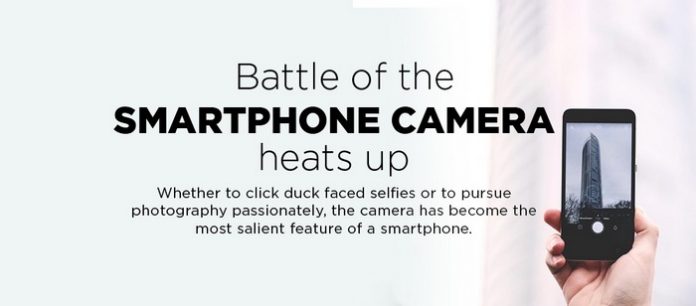The best smartphone cameras are not determined by how many megapixels they are. How many megapixels a camera is can help give a broad idea of how good the pictures are going to come out. However, in the past few years, the industry’s giants have made a run to increase front and rear camera size, flash quality and other such parameters which leads us to a situation where most top smartphones are entirely comparable in terms on megapixels and other such mundane criteria. So how can one decide which smartphone fares better in what aspect? ![Battle of the Smartphone Camera Heats Up [Infographic]](https://www.pdevice.com/wp-content/uploads/2018/01/Battle-of-the-Smartphone-Camera-Heats-Up-Infographic.jpg)
Image Source: Techiespad.com
The primary source of how good a smartphone camera is comes from reputed and authoritative reviews like DXO’s. DXO Scores are often quoted proudly to boast how good the camera is in videography as well as photography. And they are much better criteria to judge a smartphone camera by. For example, the iPhone 8 has 12 megapixels, which would put it inferior to a lot of moderately priced Android smartphones. However, given how it captures HDR only, and judging by other factors, DXO rates it at 92 for photography and 90 for video recording, which is not in the least a bad rating.
Another useful criterion to compare smartphone cameras can be aperture. The lower the aperture, the more it captures details and produces photos which have finesse, of course in standard lighting conditions. In low light, you need more light to enter your camera, which is why the aperture needs to adjust to wider. However, the same wide aperture also increases noise in the photo, which is why there needs to be scope and optimisation for image stabilization and noise reduction.
Google Pixel captures amazing pictures because of this aperture factor. However, no camera can really handle night time photography because the shutter speed needs to be really low to really capture a somewhat natural-looking photo. The best for night time photography is undoubtedly Samsung’s Galaxy Note 8. There are other great phone cameras with new sorts of builds and technologies hitting the market too. The recent iPhone 8 Plus introduced dual lens in Apple products, and it is thus capable of processing much more natural images, give a nice depth effect and also help you incorporate bokeh effects.





